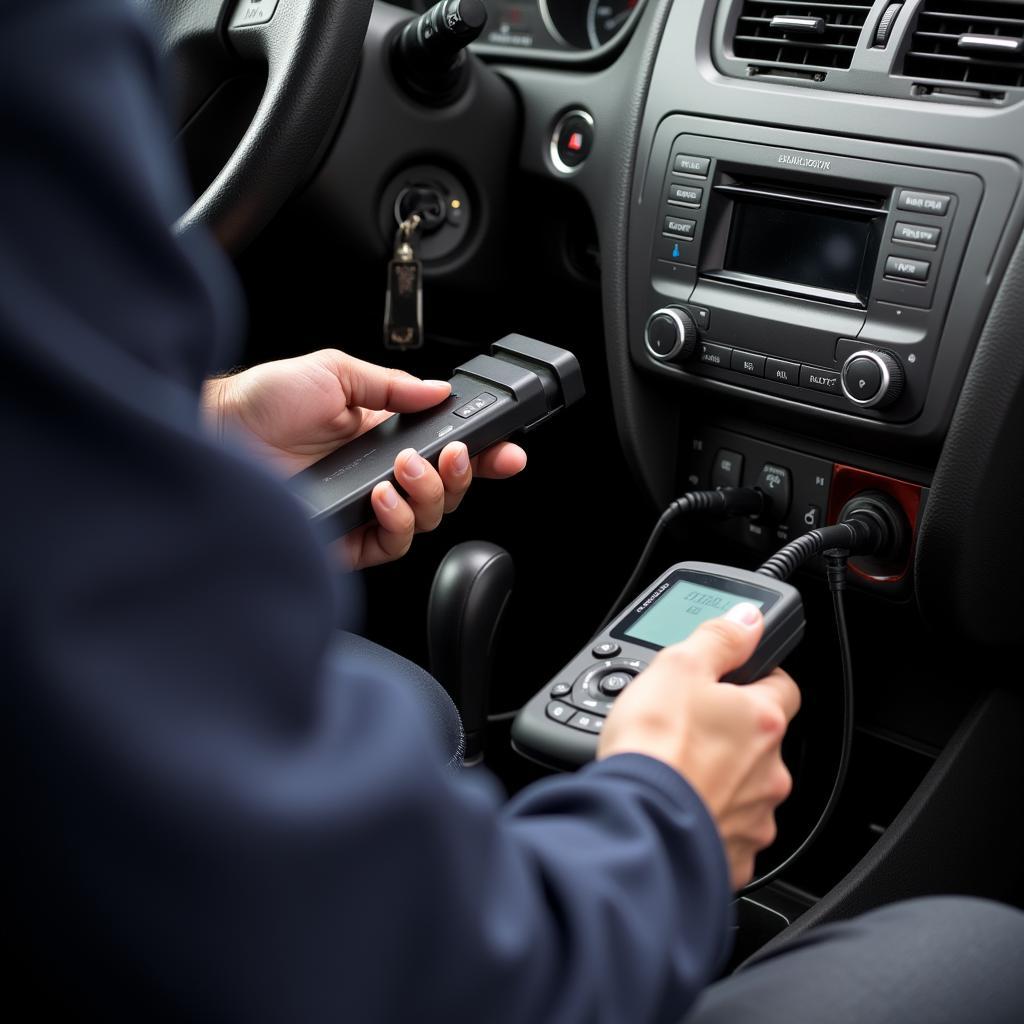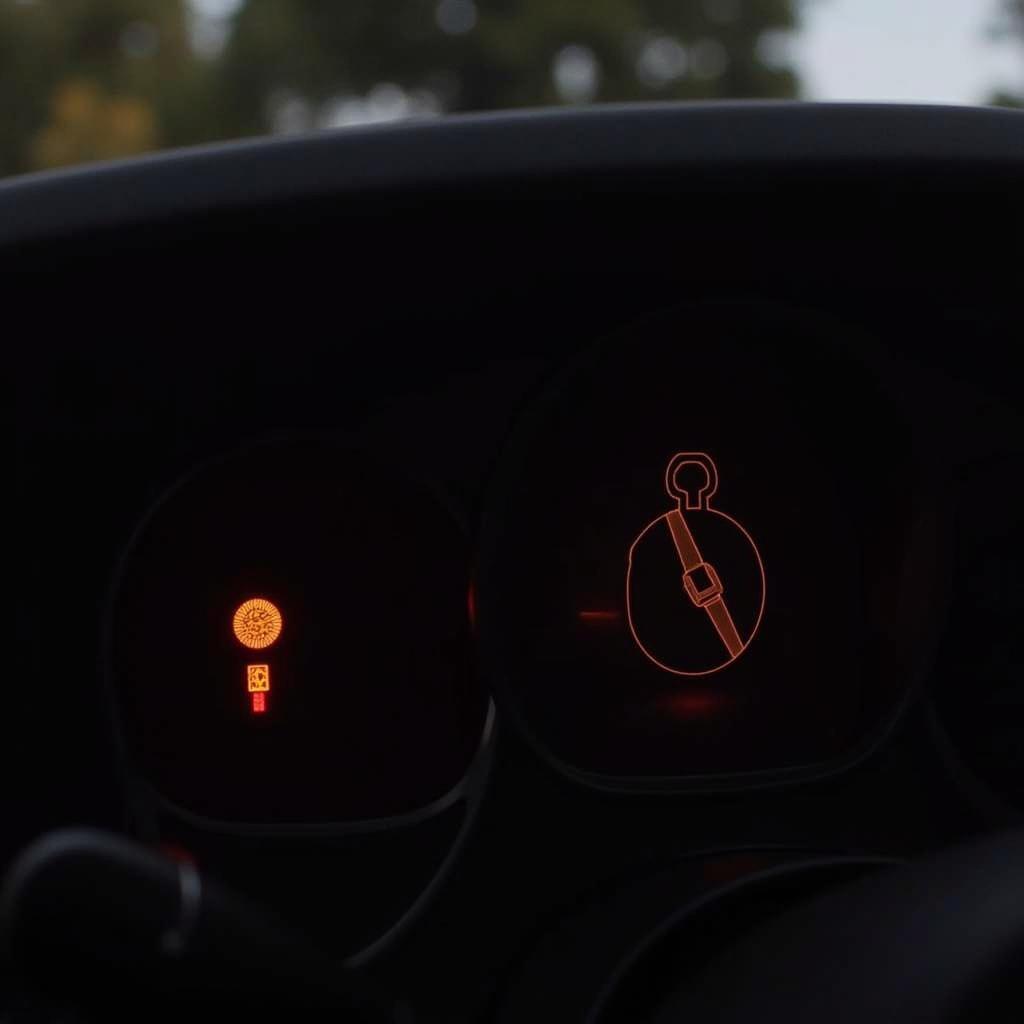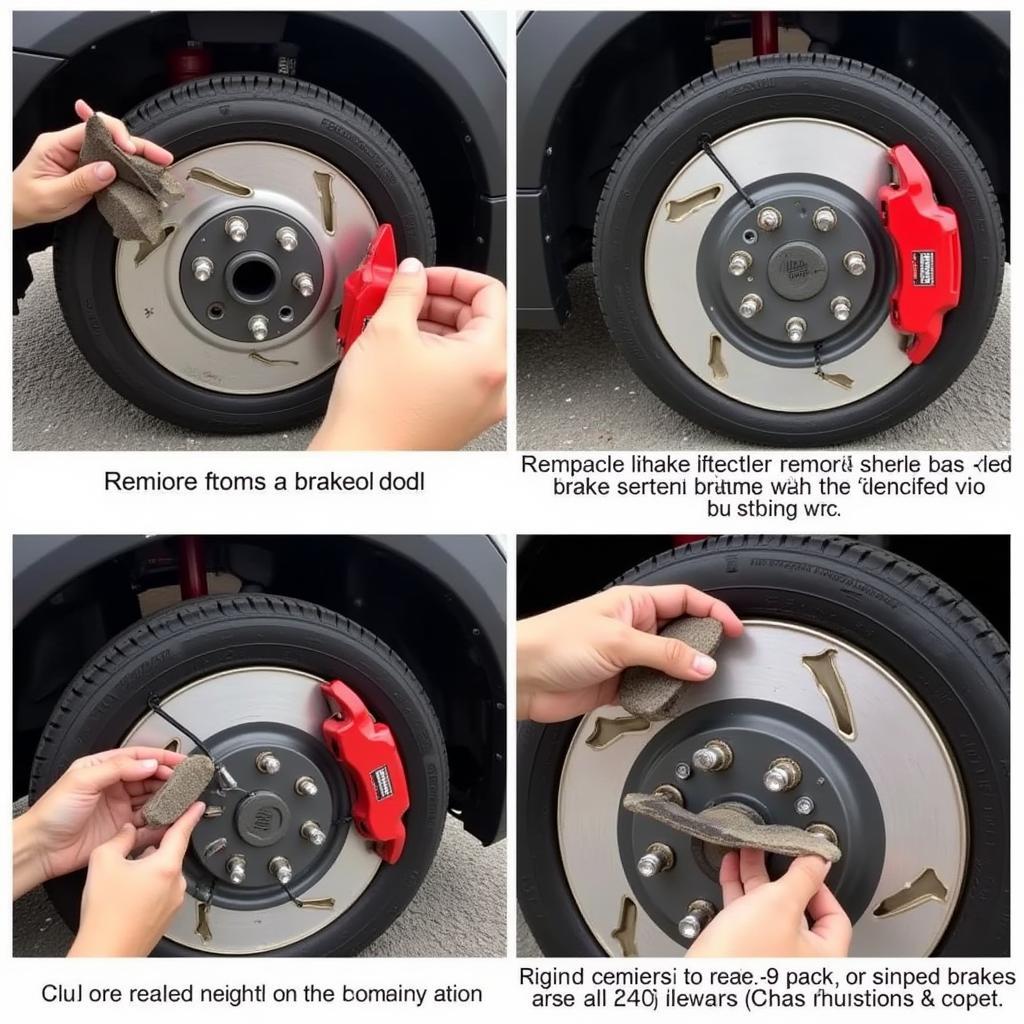The “fasten seat belt” warning chime and light are crucial safety features in modern vehicles, reminding drivers and passengers to buckle up. But what happens when this system malfunctions, leading to a persistent warning even when everyone is securely fastened? This can be incredibly frustrating and may even point to a deeper issue with your vehicle’s electronics. This article delves into the common causes of a malfunctioning fasten seat belt warning system and provides potential solutions to get your car back to operating safely and soundly.
Understanding the Fasten Seat Belt Warning System
Your car’s seat belt warning system relies on a network of sensors and components working together. Here’s a simplified breakdown:
- Seat Belt Buckle Sensor: Located in the buckle receptacle, this sensor detects when the seat belt is fastened.
- Seat Belt Pretensioner: In some vehicles, the pretensioner system is linked to the warning system. It senses weight in the seat and helps tighten the belt in the event of a collision.
- Warning Lights and Chime: When the system detects an unbuckled belt (or a malfunction), it triggers visual warnings on the dashboard and an audible chime.
Common Causes of a Malfunctioning System
- Faulty Seat Belt Buckle Sensor: The most common culprit is a broken or worn-out sensor within the buckle. Over time, dust, dirt, or spilled liquids can interfere with the sensor’s ability to detect the buckle.
- Wiring Issues: Loose or damaged wiring connecting the buckle sensor to the vehicle’s electrical system can also disrupt the signal, leading to a false warning.
- Seat Belt Pretensioner Problems: A malfunctioning pretensioner can sometimes trigger a false positive on the warning system, even if the seat belt is properly fastened.
- Software Glitch: In some cases, a temporary software error within the vehicle’s computer system can cause the warning system to activate erroneously.
 Faulty Seatbelt Buckle
Faulty Seatbelt Buckle
Troubleshooting the Warning Light
Before assuming the worst, there are a few simple troubleshooting steps you can take:
- Check for Obvious Signs: Start by visually inspecting the seat belt buckles and wiring underneath the seats for any visible damage, loose connections, or debris.
- Fasten and Unfasten: Try repeatedly fastening and unfastening the seat belt to see if the warning goes away. This can sometimes reset a minor glitch.
- Check for Objects: Ensure there are no objects (phones, coins, etc.) lodged in the seat belt buckle that could be interfering with the sensor.
- Disconnect the Battery: As a last resort, try disconnecting the vehicle’s battery for a few minutes. This can sometimes reset the vehicle’s computer system and resolve software-related glitches.
When to Seek Professional Help
If the warning persists after trying these steps, it’s best to consult with a qualified automotive electrician or mechanic. They have the diagnostic tools and expertise to pinpoint the exact cause of the problem.
 Car Diagnostic Scan
Car Diagnostic Scan
Importance of Addressing the Issue
While it might be tempting to ignore a persistent seat belt warning, especially if you’ve confirmed everyone is buckled up, it’s crucial to address the issue promptly. Here’s why:
- Safety First: A malfunctioning system could indicate a potential failure in the seat belt mechanism, putting you and your passengers at risk in a collision.
- Airbag Deployment: In many vehicles, the seat belt system is linked to the airbags. A faulty seat belt sensor could cause airbags to deploy incorrectly during an accident.
- Legal Requirements: Most states have laws mandating functioning seat belt systems. Driving with a known issue could result in fines or complications during vehicle inspections.
Fasten Seat Belt Warning Decal: A Temporary Solution?
You may be tempted to cover up a persistent warning light with a decal. However, this is not recommended. Masking the problem doesn’t solve it and could create a dangerous false sense of security.
 Seatbelt Warning Light
Seatbelt Warning Light
Conclusion
A malfunctioning fasten seat belt warning system can be a nuisance, but more importantly, it’s a safety concern that should never be ignored. By understanding the common causes and taking appropriate troubleshooting steps, you can ensure your vehicle’s safety features are working as intended, giving you peace of mind on the road.

